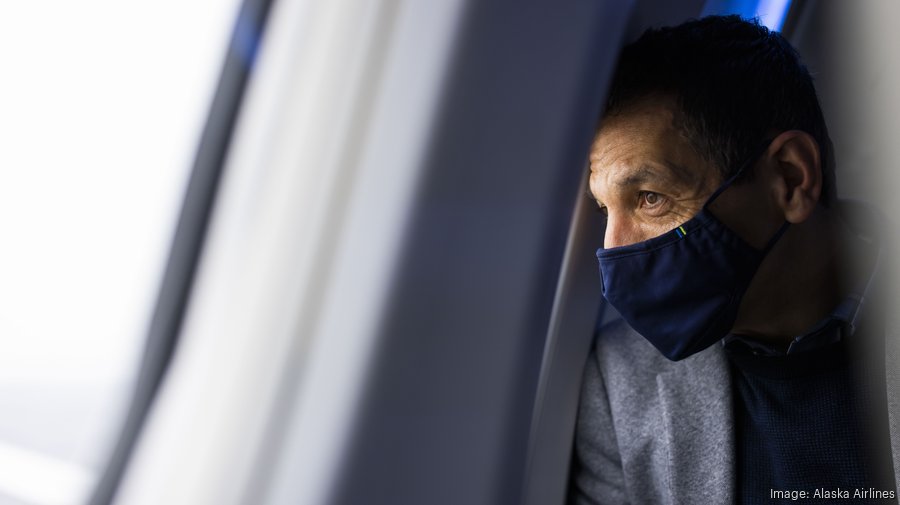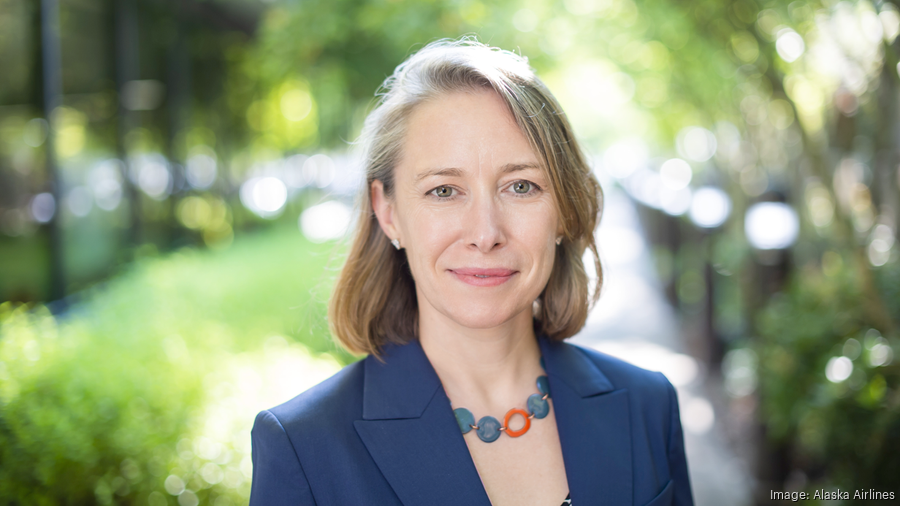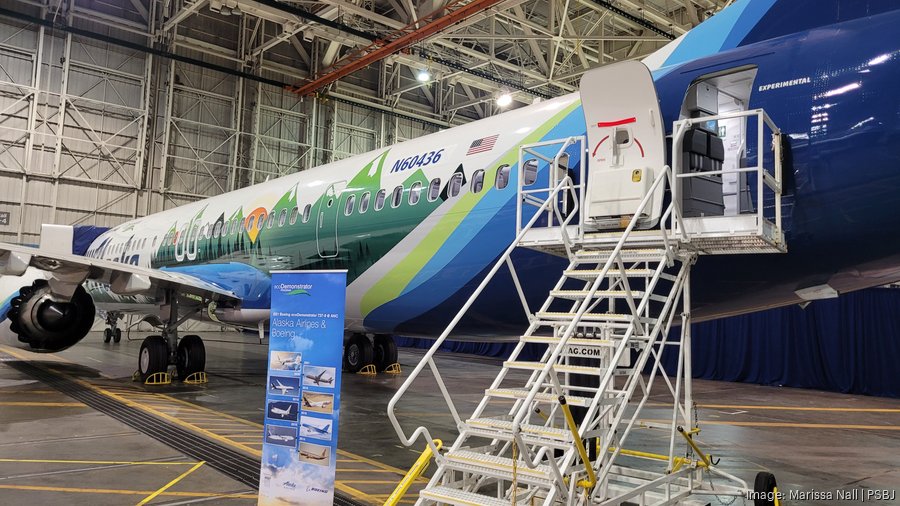Sustainability has made its way up the Boeing Co.’s (NYSE: BA) priority list as it plans out development of its next commercial jet model.
Reducing greenhouse gas emissions and improving environmental metrics has become a “requirement of entry” for the aviation market, Mike Sinnett, head of Boeing product development said at an event showcasing the company’s ecoDemonstrator plane in partnership with Alaska Airlines Sept. 27.
Sinnett signaled that sustainability would be increasingly important for the aerospace manufacturing giant in the coming years, including within its supply chain partnerships. That includes development of its next passenger jet model, which will likely fit somewhere between its single-aisle 737 Max and its long-haul 787 Dreamliner.
The company's focus on sustainability hasn't waned despite the challenges the industry has faced as demand for air travel plunged during the pandemic, he added.
“It might have been easy to pull the plug and say we can’t afford to invest right now,” Sinnett said of the green initiatives. “We can’t afford not to invest.”
Boeing is the second-largest employer in Washington state, with about 57,000 employees as of April, largely to support production of around 16 737 Max jets per month in Renton. It also produces a handful of planes per month across its 747, 767 and 777 programs in Everett. (Boeing will end production of the 747 in 2022.)







“This plane is a significant part of our future. We believe in it, we believe in Boeing and we believe in our employees who will spend the next five weeks in training to ensure we’re ready to safely fly our guests," Alaska's future CEO Ben MInicucci said after the delivery.
The 2021 737 Max 9 ecoDemonstrator plane was equipped with more than 20 sustainable technology prototypes, including recycled carbon-fiber side wall panels, a low-profile anti-collision light to reduce drag and lightweight housings for controls in the cockpit.
The plane also featured touchscreen controls and sensors developed in partnership with the National Oceanic and Atmospheric Administration to collect carbon dioxide and carbon monoxide data in flight to help with climate modeling.
Now in its eight iteration, the demonstration craft provides a platform to test many incremental technologies that otherwise wouldn’t justify the cost of a flight test program, Sinnett said.
“By bundling dozens of technologies together on one testbed, we’re able to cost-effectively test many technologies at once,” he said at the event.
In past years, that’s led to swifter development of things like sanitizing technologies that were retooled for rapid deployment during the Covid-19 pandemic. On the current model, a new prototype fire-suppression system for the engine and cargo bay aims to eliminate the use of ozone-depleting halon gas — an experimental program that wouldn’t have been possible on a typical production line.
Alaska Air Group Inc. (NYSE: ALK) will partner with Boeing to conduct the test flights using the technology over the next six months before entering the plane into service.

Sustainability is also a key part of the airline’s investment priorities. Top among them, reducing jet fuel consumption is “core to running our business,” said Diana Birkett Rakow, vice president of public affairs and sustainability for the SeaTac-based company.
Alaska, which employs more than 9,000 people in Washington, currently uses around 750 million gallons of fuel per year and plans significant investments in expanding sustainable aviation fuel, or SAF, Birkett Rakow said. That includes lobbying efforts for federal and state tax credits for SAF producers, among other initiatives to improve access to capital and identify biomass and municipal waste that are critical ingredients in refining the fuels.
Sign up here for the Business Journal’s free morning and afternoon daily newsletters to receive the latest Puget Sound-area business news. For more business intelligence, follow us on LinkedIn, Facebook, Twitter and Instagram.





